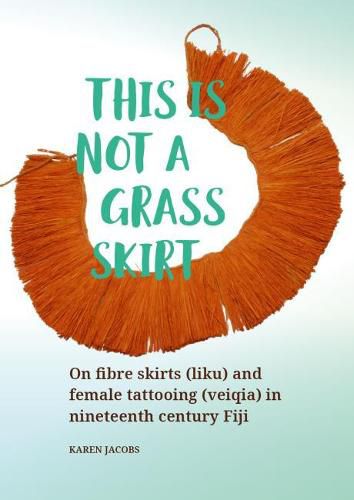Readings Newsletter
Become a Readings Member to make your shopping experience even easier.
Sign in or sign up for free!
You’re not far away from qualifying for FREE standard shipping within Australia
You’ve qualified for FREE standard shipping within Australia
The cart is loading…






The Pacific ‘grass skirt’ has provoked debates about the demeaning and sexualised depiction of Pacific bodies. While these stereotypical portrayals associated with ‘nakedness’ are challenged in this book, the complex uses and meanings of the garments themselves are examined, including their link to other body adornments and modifications. In nineteenth-century Fiji, beautiful fibre skirts (liku) in a great variety of shapes and colours were lifetime companions for women. First fitted around puberty when she received her veiqia (tattooing), women’s successive liku were adapted at marriage and during maternity, performing a multiplicity of social functions.
This book is based on a systematic investigation of previously understudied liku in museums collections around the world. Through the prism of one garment, multiple ways of looking at dress are considered, including their classification in museums and archives. Also highlighted are associated tattooing (veiqia) practices, perceptions of modesty, the intricacies of intercultural encounters and the significance of collections and cultural heritage today.
The book is intended for those interested in often neglected women’s objects and practices in the Pacific, in dress and adornment more generally and in the use of museum collections and archives. It is richly illustrated with rare and previously unpublished paintings and drawings, as well many examples of liku themselves.
$9.00 standard shipping within Australia
FREE standard shipping within Australia for orders over $100.00
Express & International shipping calculated at checkout
The Pacific ‘grass skirt’ has provoked debates about the demeaning and sexualised depiction of Pacific bodies. While these stereotypical portrayals associated with ‘nakedness’ are challenged in this book, the complex uses and meanings of the garments themselves are examined, including their link to other body adornments and modifications. In nineteenth-century Fiji, beautiful fibre skirts (liku) in a great variety of shapes and colours were lifetime companions for women. First fitted around puberty when she received her veiqia (tattooing), women’s successive liku were adapted at marriage and during maternity, performing a multiplicity of social functions.
This book is based on a systematic investigation of previously understudied liku in museums collections around the world. Through the prism of one garment, multiple ways of looking at dress are considered, including their classification in museums and archives. Also highlighted are associated tattooing (veiqia) practices, perceptions of modesty, the intricacies of intercultural encounters and the significance of collections and cultural heritage today.
The book is intended for those interested in often neglected women’s objects and practices in the Pacific, in dress and adornment more generally and in the use of museum collections and archives. It is richly illustrated with rare and previously unpublished paintings and drawings, as well many examples of liku themselves.